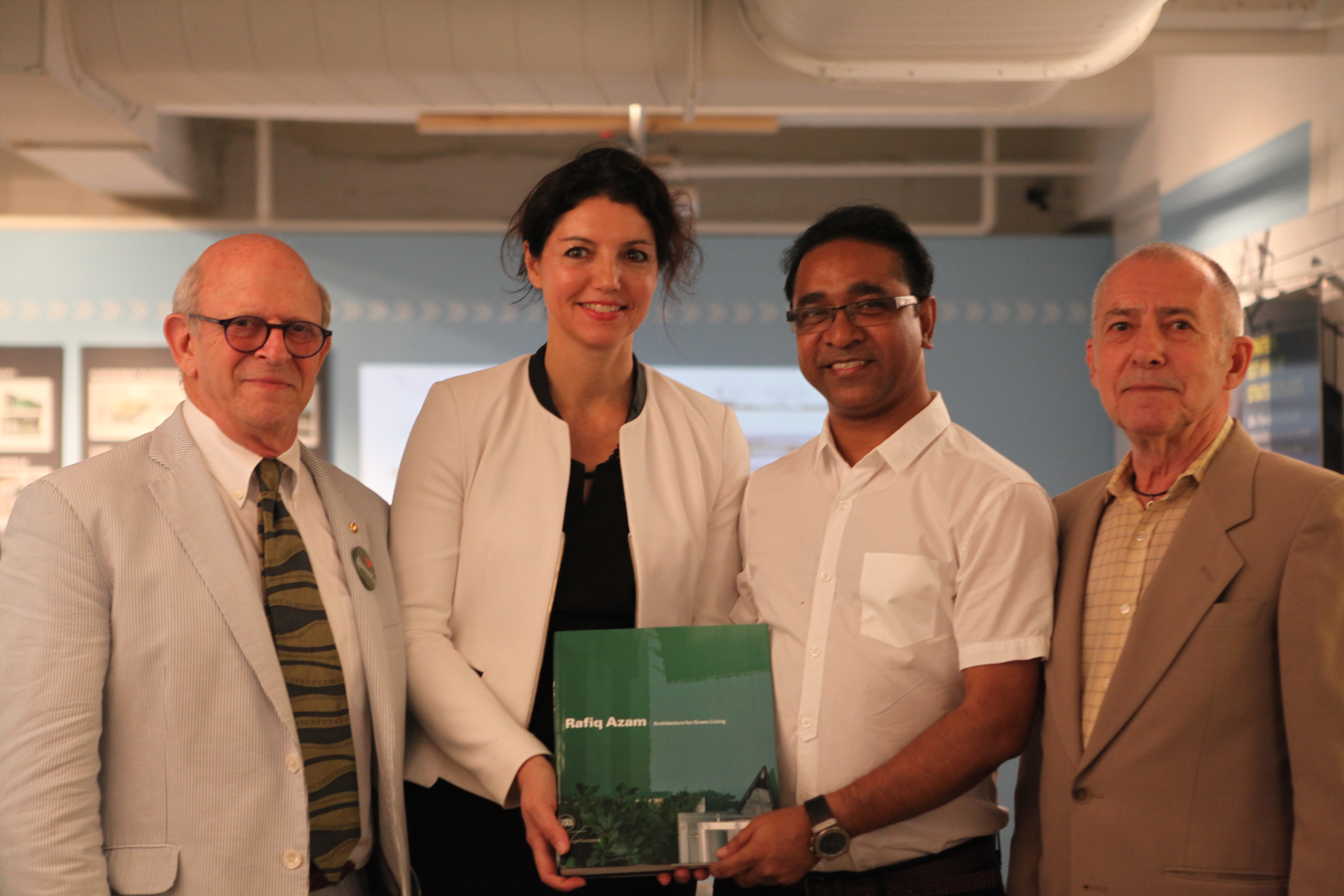by: lkesic
The event “Architecture as a Way of Life and Placemaking” was certainly not business as usual at the Center for Architecture. As AIANY Architecture for Education Committee Co-chair, Umberto Dindo, FAIA, said, it felt like a meditation on the universe, life, space, and sensations with the pictures falling into place. That feeling was already present when AIANY 2014 President Lance Jay Brown, FAIA, in his opening remarks, invoked and recited a poem by the great Bangladeshi poet Rabindranath Tagore, the literary Nobel Laureate of 1913, who’s poetic strength he credited with helping him in a very difficult period of his life.
Unusual also, because – how many times do you have a chance to meet an architect who prefers to sketch with watercolors rather than with a pencil? How many architects accept that we are not destined to change the world, but only to change ourselves and our designs? And perhaps most exceptionally – how many architects find the courage to move forward after teachers tell them to change their profession because they don’t deserve more than a failing grade? Luckily for us, Rafiq Azam, principal of Dhaka-based SHATOTTO architecture for green living, did.
Azam’s true passion for architecture grew out of the tribulations of his family in Bangladesh. He wanted to be an artist, while his father suggested a law or engineering degree, something more respectable. A friend recommended architecture as a compromise. After his father passed away, Azam’s mother hired the original architect of her house to work on an expansion to accommodate the growing needs of her nine grown children. The new plans were heartbreaking to her, lamenting: “Where is my court yard? Where is my garden?” These were my memories of having spent my time with your father, and now they want to erase my memories?” As if in a Greek drama, the re-design of his mother’s house became Azam’s personal challenge while still a student of architecture. It looked like a great mountain in front of him, and he had only two options – either to turn back and lose, or try to go forward, over the mountain, and reach his dreams. This experience became a turning point in his career. He gave his mother plans for the new house with a courtyard and a garden, giving her back a sense of space and memory.
Now, each time he designs a house, Azam gives people a courtyard and a garden, even in multi-story buildings. It is his connection to his mother. For others, it’s an opportunity to create their own spiritual space and memories. “Whatever I have learned in architecture, I learned from my mother,” he said. Nevertheless, Azam accepts that his out-of-the-ordinary approach to architecture was something that was built step by step thorough his career, hence the name he gave his office, “Shatotto,” which means doing something continuously in Bangla. He highlights a Master Class he took with Australian architect Glenn Murcutt, who became a father figure and lifelong friend, and taught him to think less about architecture and buildings and more about humanity, humility, colors, and even flowers. Azam goes even further, and tries to connect his approach to architecture to the classical notion of genius loci, which ancient Romans believed was the spirit of a place. He finds relationships between the sun and Bangladeshi land with its great waters coming from the Himalayas and spilling through the largest delta on the planet into the Bay of Bengal. “Bangladesh is a country of toil and poetry. I am trying to do architecture by watercolor as if I took a full brush from the light of the sun and put it on the canvas of shadow. Watercolor becomes architecture, architecture becomes light, light touches water, it touches our heart. All buildings must breathe life and talk to us,” Azam insists, which invokes Louis Kahn, who left his legacy in Dhaka, asking what bricks like to be or whether columns are filled with hope.
Azam also expressed his critical view of the current world and society. He questioned the honesty and mistrust between citizens: “What are we doing to our cities? Cities of despair, unsustainable, and unreliable. Where are we going with all of this?” he asks. “Architecture is not only poetry. It also has a great responsibility and civility.” His criticism goes deeper into the micro-level of streetscapes and houses where “society has become fragile and vulnerable, and where we no longer trust each other.” As a response and to prove that we can change our cities, he designed an inspiring project in Dhaka that links the streetscape with the interior in the spirit of civility and living together. Azam revealed his understanding of the relationship between nature and architecture. He said that Bangladesh is a country of six seasons and his designs have to respond to them: “In each house, I design a green room to contemplate nature, a wind room for the hot season, and a rain room to listen to the melody of the rain. But I also want an anger room, where we can escape and that will sooth us and let us, by its beauty, contemplate what we are angry about, like meditating…”
Lazar D. Kesic, AIA, is co-chair of the AIANY Committee on Architecture for EducationLazar D. Kesic, AIA, is co-chair of the AIANY Architecture for Education Committee.
Event: Architecture as a Way of Life and Placemaking
Location: Center for Architecture, 07.28.14
Speakers: Rafiq Azam, Principal, SHATOTTO architecture for green living; Rosa Maria Falvo, International Commissions Editor, SKIRA; Lance Jay Brown, FAIA, 2014 President, AIANY (opening remarks); and Umberto Dindo, FAIA, Co-chair, AIANY Architecture for Education Committee
Organizers: AIANY Architecture for Education Committee
Sponsors: Asia Society New York








